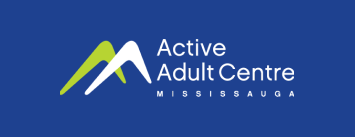If you’ve ever received a suspicious call or text message, chances are you’ve encountered a would-be scammer.
This might sound familiar: Your cell phone starts ringing. Your screen shows a number you don’t recognize. You answer, and the caller immediately besieges you with threats of your arrest on behalf of the RCMP, or money owed to the CRA. Or maybe, it’s a seemingly friendly voice claiming to clean your air ducts for a good price. Just as likely, it’s not a human being’s voice at all but a robotic recording. If you’re an older person, you may have even gotten calls from individuals claiming to be relatives, asking for money to help them out of trouble.
These are just a few of the most common tactics that fraudsters use in phone calls with Canadians, all in an attempt to steal personal information, or money. In fact, research from the US and UK indicates spam and fraud have become so pervasive, many people refuse to answer calls altogether on their personal devices.
For older generations who grew up with telephones, it may be baffling news: how does an entire form of communication, one established in households for decades, become untrustworthy from sheer volumes of scammers? For now, telecom industry experts don’t have a clear-cut answer on the source or how to stop them completely. These calls don’t all come from a single organization, and the malicious callers can conceal their origins using tactics like number spoofing.
However, in Canada, steps are being taken to reduce the volume of these calls and raise awareness on what phone users can do to protect themselves. In November of last year, regulators put into law technology requirements for phone companies in order to reduce the number of fraudulent callers. In addition, Canadians can find up-to-date information on how to identify spam using the Canada Revenue Agency’s ‘Scams and Fraud’ webpage. Taking additional steps like signing up for the National Do Not Call list is also recommended.
Quick Tips for Preventing Spam:
-
Many smartphones today have spam blocking or number blocking functions the user can turn on. Your service carrier may also provide similar functions to its customers.
-
Third party apps can be installed that also block spam calls and messages. However, you should always read reviews and research apps before installing them – they might be spam too!
-
Register for the National Do Not Call list, available through this link: https://lnnte-dncl.gc.ca/en
-
If you believe a scammer has contacted you, report it to the Canadian Anti-Fraud Centre online or by calling 1-888-495-8501 (open 9am – 4:45pm EST)
-
Do not answer calls from unknown numbers, or numbers without Caller ID.
-
Hang up if a caller cannot: prove their identity or prove who they work for, demands money or gift cards, asks for your personal information or banking information, offers obscure services irrelevant to you, or threatens you.



